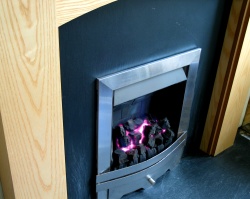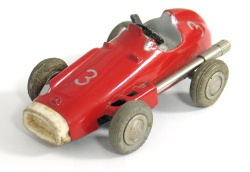What’s greener … centralling heating the whole house or warming one room with a fire?
 June. The month that starts summer. The month when we should be dusting down our sunglasses and joyeously celebrating the fine weather with picnics on the beach. And yet here I am, in a thick winter jumper and woolly socks, flanking myself with cats to keep me warm. Our house is north-facing so windchill aside, it’s generally warmer outside than in but this is getting silly now. JUNE.
June. The month that starts summer. The month when we should be dusting down our sunglasses and joyeously celebrating the fine weather with picnics on the beach. And yet here I am, in a thick winter jumper and woolly socks, flanking myself with cats to keep me warm. Our house is north-facing so windchill aside, it’s generally warmer outside than in but this is getting silly now. JUNE.
In the evenings, even with jumpers and post-dinner warmth, we get rather chilly and start contemplating the options. Usually it suffices for me to just tuck my feet under a blanket and pile on another cat, but sometimes John starts pawing about turning on the fire or the central heating.
We usually stay together in the living room in the evening so it doesn’t seem to make sense to heat the whole (small) house with the gas-powered central heating radiators but the central heating is pretty efficient and it heats the room in a fraction of the time we would need the (also gas-powered) fire to achieve the same warmth. We’re not looking for a sauna, just something to take the chill off the evenings.
Any thoughts as to which is more energy efficient?
























I’m not sure about gas but open fire can actually make the room feel colder if you’re not right next to the flames: they make it drafty and you loose most of the heat straight up the chimney. Plus you can’t control exactly how long they’re on for so I’d say a short burst of central heating was much than that. Paul.
whatever type of open fire, it requires air flow. the bigger the fire, the more air it needs.
most modern houses are tightly built and can’t sustain enough air for a big open log fire and results in depressurisation.
the air that is pulled in from outside is obviously as cold as it is outside. so the colder the weather, the less efficient an open fire can be!
It’s been lovely and sunny this afternoon! So hope you don’t need either this evening!
-SaraR
Because they suck up so much room air, typical open fireplaces deliver between zero and 20 per cent net efficiency.
A fireplace that uses current technology, one that is EPA certified for low emissions, for example, will deliver between 60 and 70 per cent efficiency.
This means a modern woodburning fireplace is competitive with any other form of home heating in terms of energy efficiency.
http://www.woodheat.org/technology/openfire.htm
If it’s snowing outside, go and shovel your driveway (with a shovel, no snowblowers). You have to wear thick layers. Within no time, you will feel quite hot, and will not want the indoor heating when you enter your house. Plus, your driveway will be snow free now.
Option C.
Use an electric space heater.
This can be a lot cheaper than natural gas depending on your power costs.
Hopefully you should have thermostatic controls on all your radiators, meaning you can turn off all the other radiators in your house, turn up the one in the room you’re using, and use your central heating to heat only the parts of the house you’re in.
If you don’t have controls on all your radiators then consider getting some fitted – sounds as though it could save you some money in fuel bills!
I have a friend that has a fireplace (wood) which is built in solid iron of some sort, this one is special though, it has water pipelines running on the top of it, so he has it connected to the radiators at his house. In this way by circulating warmed up water at about 70000-85000 btu through the radiators, his house is much warmer that otherwise.
Also modern fireplaces take air from the chimney so you do not experience the air in the room not being enough.